Getting Started
- What is M-Files?
- What is Metadata?
- Intro to the M-Files Interface
- Accessing M-Files
- M-Files Terminology
- Saving Documents with Metadata
- Introduction to Metadata Cards
- How to Save Documents
- Finding Information with Metadata
- How to Use Quick Search
- Organizing with Views
- How to Use Views
- How to Use the Pinned Tab
- The M-Files Way to Collaborate
- How to Modify Documents
- How to Share Documents
M-Files Products
- Introduction to M-Files Mobile Application
- Introduction to M-Files Hubshare
- Introduction to M-Files for Microsoft Teams
- Introduction to M-Files Aino AI Assistant
- Introduction to Desktop Co-Authoring in M-Files
Beyond Basics
- Grouping Information
- Creating Views in M-Files
- Search Options
- How To Create Document Collections
- How to Create Multi-File Documents
- How To Create Relationships Between Objects
Tips and Tricks
- How to Create and Complete Assignments
- How to Create Notifications in M-Files
- How to Use and Create Document Templates
- How To Use Offline Mode in M-Files
- How to Change the Default Check-In Functionality
- How to Use Workflows in M-Files
- Permissions in M-Files
- How to Convert Documents to PDF Format
- How to Avoid Creating Duplicate Content in M-Files
- How to Co-Author Documents with Office 365

Intro to the M-Files Interface
Your first contact with M-Files is most likely through the M-Files Desktop application.
This lesson introduces you to interface of M-Files Desktop.
Using M-Files Web?

M-Files Web User Guide
The M-Files Web User Guide is the go-to resource for all things related to M-Files web browser-based tool – M-Files Web.

M-Files Web Interface Overview
While M-Files Desktop and M-Files Web are very similar, there are a few notable differences. Therefore, if you're using M-Files Web, here's a specific overview of the web tool's user interface.
The M-Files Desktop Homepage
When you open your M-Files application, you are greeted with the home page.
Clicking the M-Files logo in the top-left corner of the user interface will take you back to the homepage.
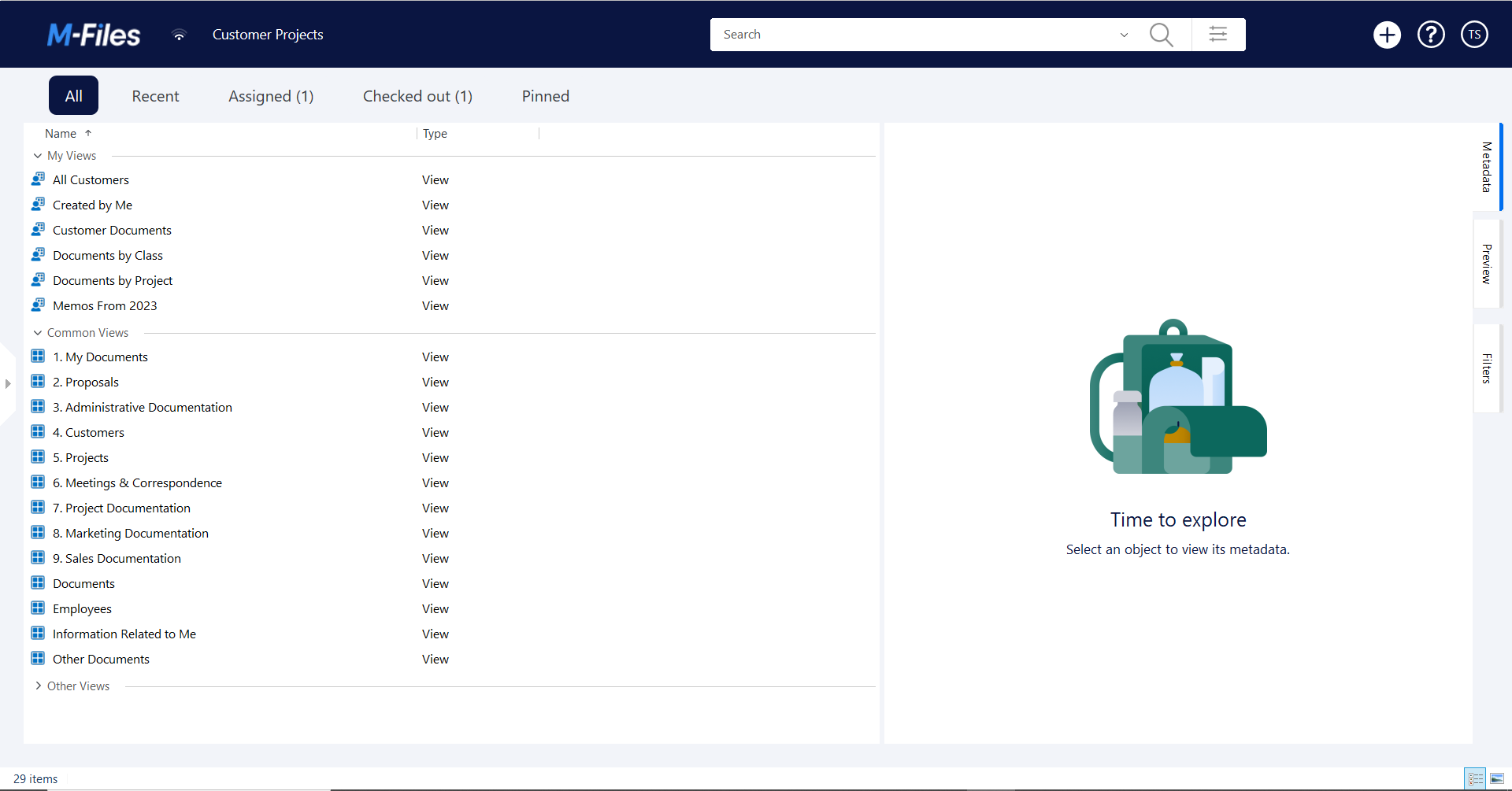
Navigation Path
To put it simply, the Navigation Path shows you where you are. It tells you which vault you’re currently working in and where you are in that vault. Your navigation path may be a different color.

Information Tabs
The All Tab
Within All, you’ll find common views and personal views.
Common views are created by your company’s business administrator to help you easily find information throughout your organization.
Views are basically saved searches based on metadata, which you can use to browse information in M-Files.

Get Started With Views

Organizing with Views
Views are a favorite features among M-Filers all over the globe. They look and feel like folders but they are way better. Learn more about what they are, how they work, and how they'll benefit you.

How to Use Views
Views are saved searches. Browsing and accessing documents through views make up a heavy part of using M-Files every day.
The Recent Tab
Under the Recent tab, you can see every object that you’ve accessed within the past 30 days.
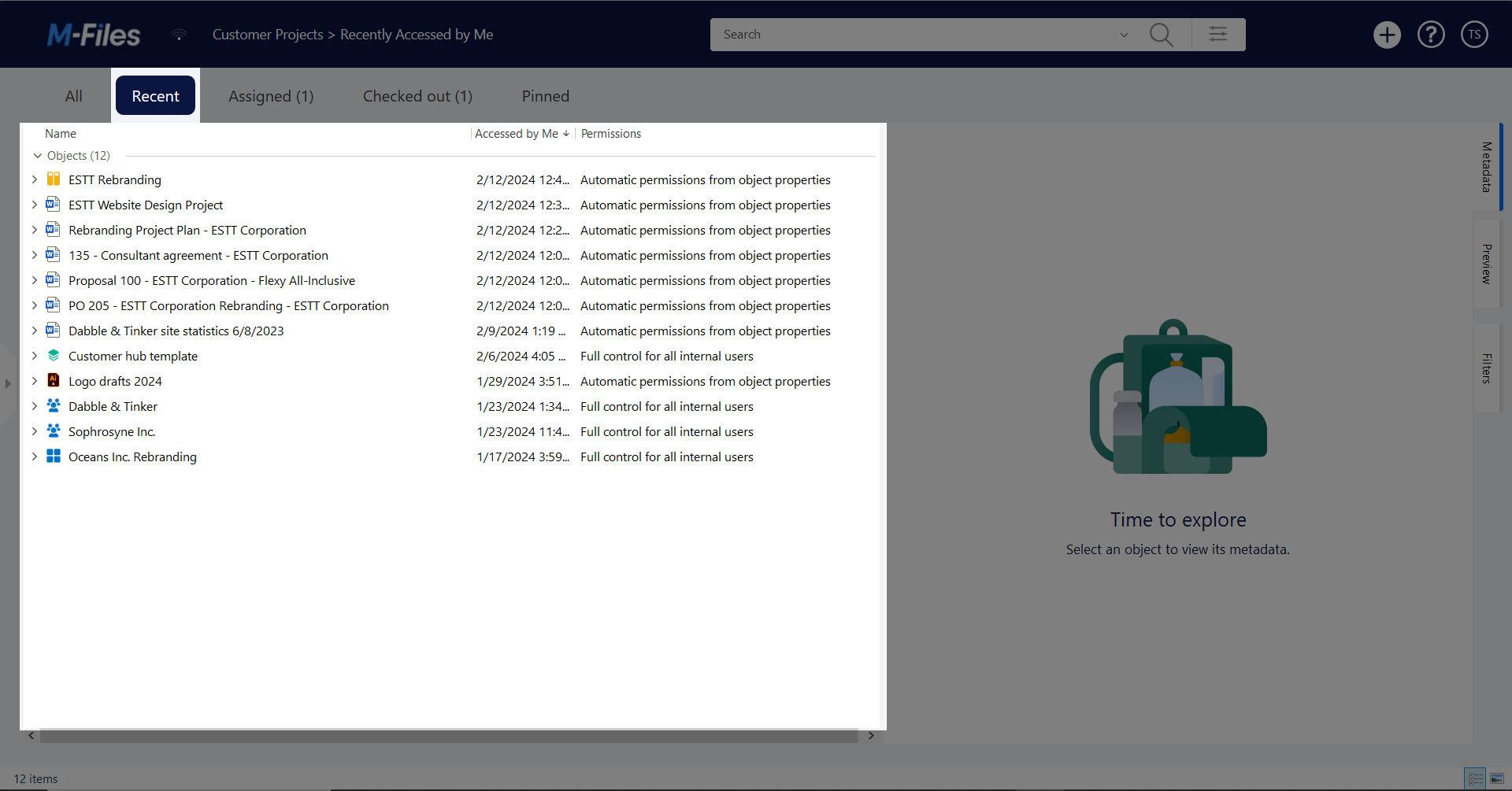
The Assigned Tab
Assigned shows all the assignments that require any actions from you.

The Checked out Tab
The Checked out tab shows all the documents you have currently reserved for modification.
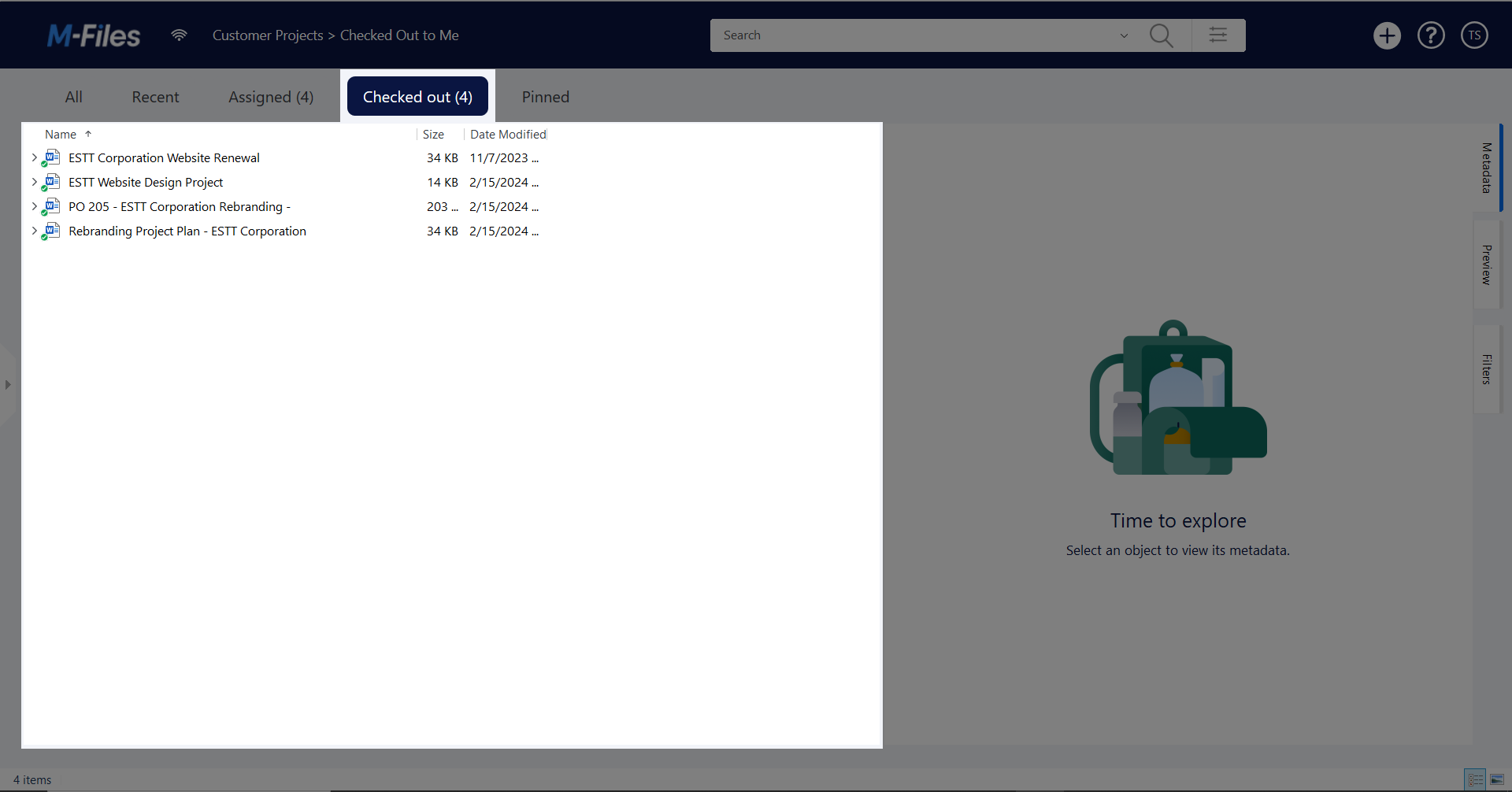
The M-Files Way to Modify & Collaborate on Documents
The Pinned Tab
You can access your pinned documents and objects in the Pinned tab. You can think of these as your favorites that you want available for quick and easy access.

The Create Menu
You can create new documents and other objects directly in M-Files from the Create menu.
Because M-Files is customizable, what you see in your vault’s Create menu will look different. A great way to get to know what sort of information your vault manages is to browse through the options in the Create menu.

The Quick Search Bar
You can use the quick search like any other text search.
In most situations, it’s a good idea to make use of the metadata filters in the search bar to narrow down your search results.
When you do a search, M-Files lists the results for you to browse. Use the columns to arrange the results according to your liking.
Explore How M-Files Makes It Easy to Find the Information You Need
Search Options
NOTE! Search options are currently unavailable in M-Files Web and the new M-Files Desktop. The feature will be made available during 2025.
Next to the quick search, you can find the search options, which allows you to use metadata values as search phrases, such as Customer = ESTT Corporation. This search will find all objects that have the Customer listed as the ESTT Corporation in its metadata.
The Right Pane
On the right side of the user interface, we have several tabs with different functions, the Metadata tab, the Preview tab, and the Filters tab.

The Metadata tab
Whenever you select an object in M-Files, the Metadata tab reveals an object’s metadata card. This metadata card tells you what this object is and what it’s related to. Every object in M-Files has a metadata card, as metadata is the driving force of M-Files.
From the options ribbon on the metadata card, you can choose to view the document version history, follow the object, pin it, or pop out the metadata card to inspect it closer.
Dive into Metadata
The Preview Tab
The Preview tab allows you to preview a selected document without having to open it in a separate program.

The Filters Tab
If you get too many results when making a search, you can use the Filters tab to further narrow down your search results by as sorts of criteria like object type or when it was last modified.
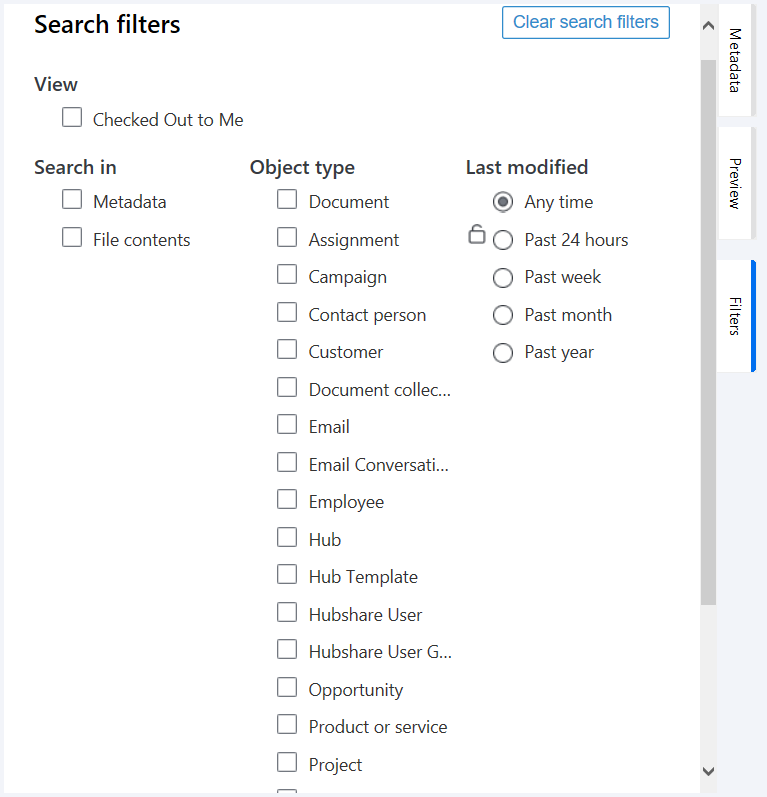
User Menu
From the User menu, you can change the user interface and vault language or choose the default landing page. For instance, if you prefer to have the Pinned tab, or the Recent tab as your homepage when opening your vault, you are free to change it in the User menu.
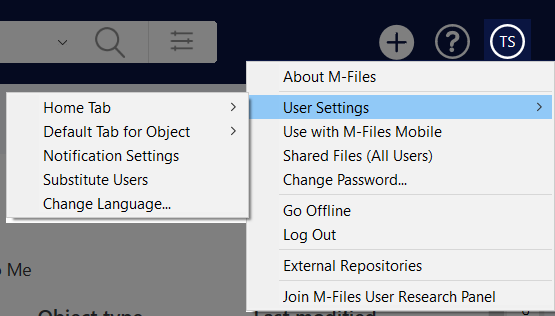
FAQ
Got Questions?
If you’re used to saving documents by location (like in a folder), the M-Files way might seem odd at first. In M-Files, documents are saved and captured by metadata, not by location. So to answer this question, your documents are in M-Files, but not in any specific place in M-Files. You can find you documents multiple ways, through views, the Recents tab, search, the Pinned tab.
Once you get used to the M-Files way of saving and finding information, you’ll see just how easy it is to find the information you need when you need it.
You can review our other guides about saving and finding information to learn more.
M-Files is fully customizable. Therefore, every organization has its own tailor-fit version of M-Files. While the general layout of the interface might be similar, things like the create menu, common views, classes, and properties will be different and tailored for your organization. Even the colors might look different. It’s important to spend some time getting to know how your vault works.
Overall, they are similar. However, there are some notable differences in the user interface and the features available. M-Files Desktop offers more features than M-Files Web. However, we are working to change this so that the full feature set of M-Files is available in both desktop and web. If you’re primarily using M-Files Web, we recommend that you use the M-Files Web User Guide.





